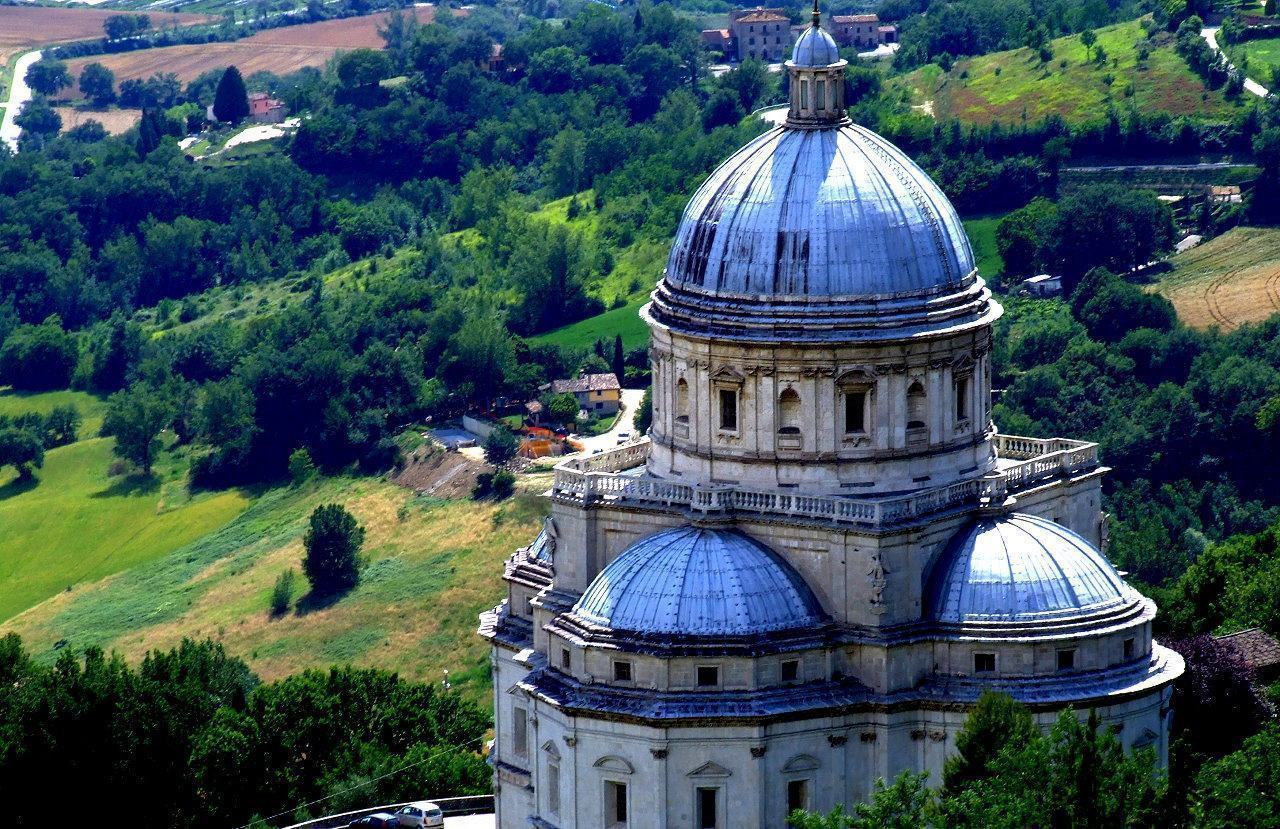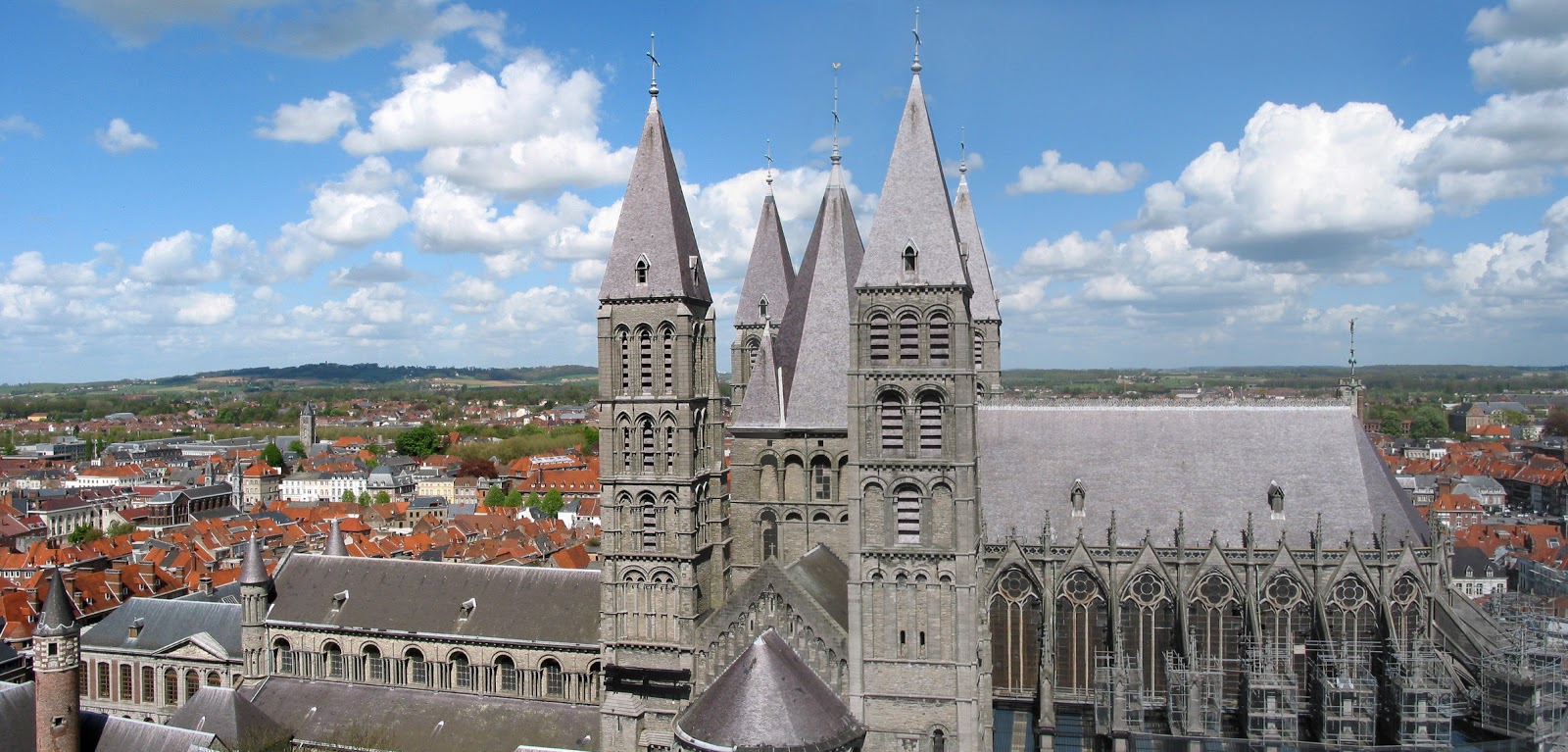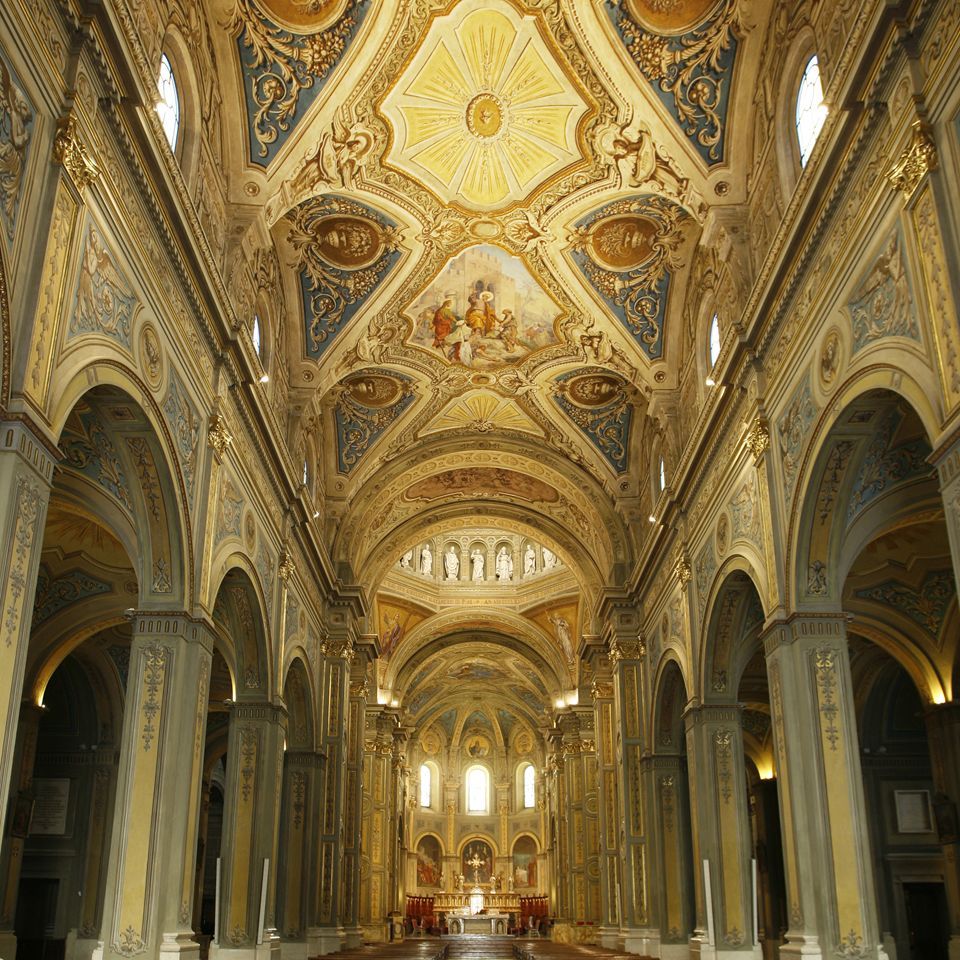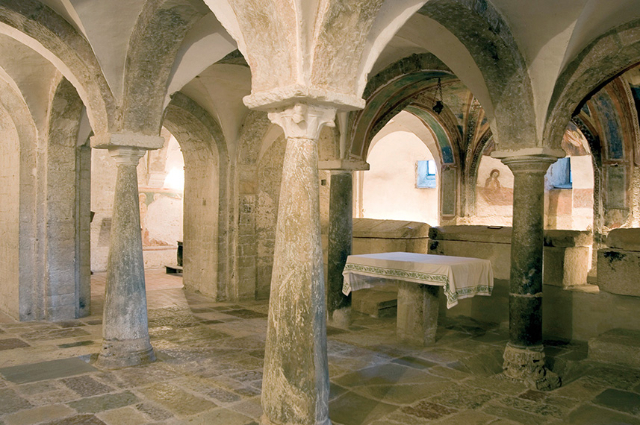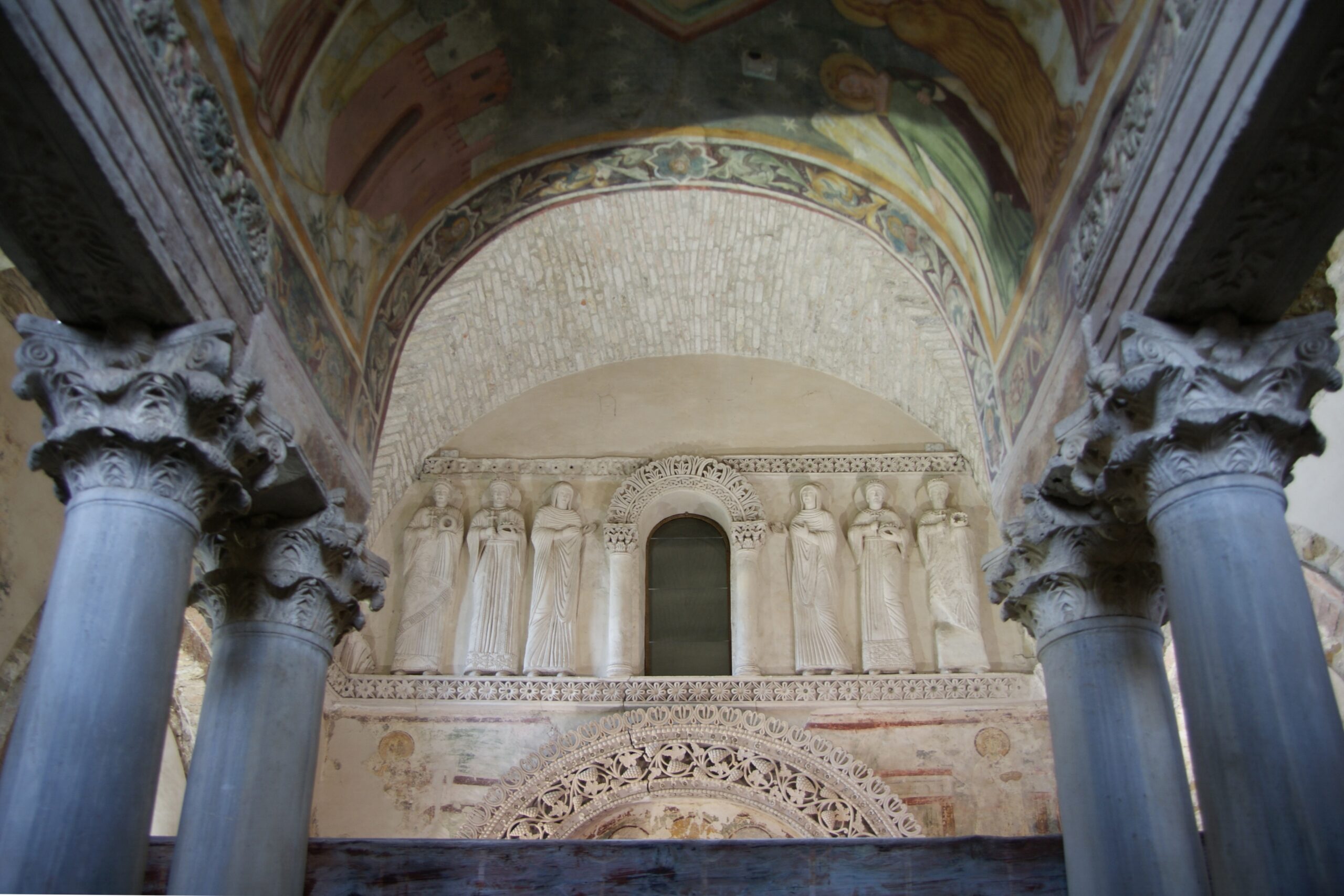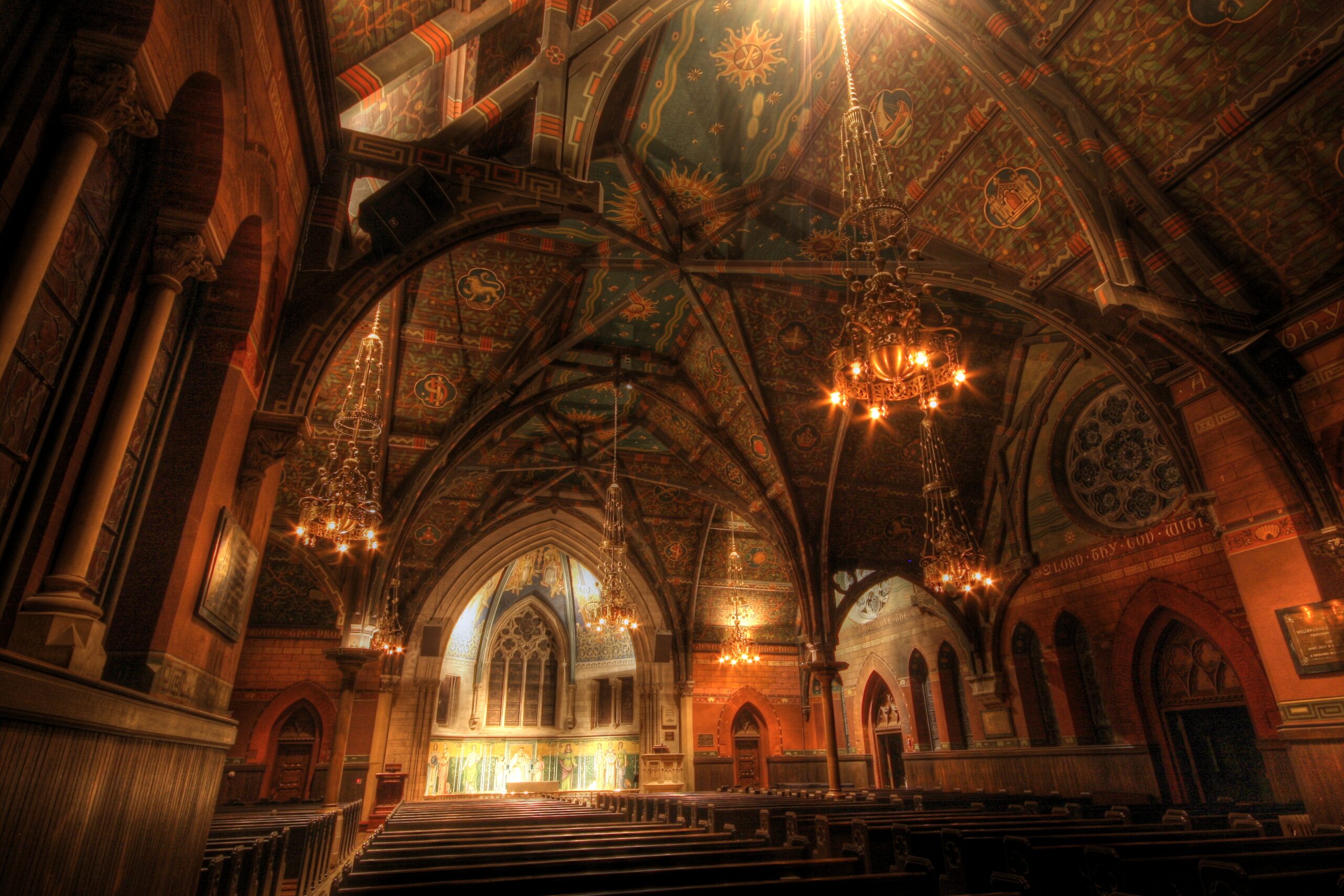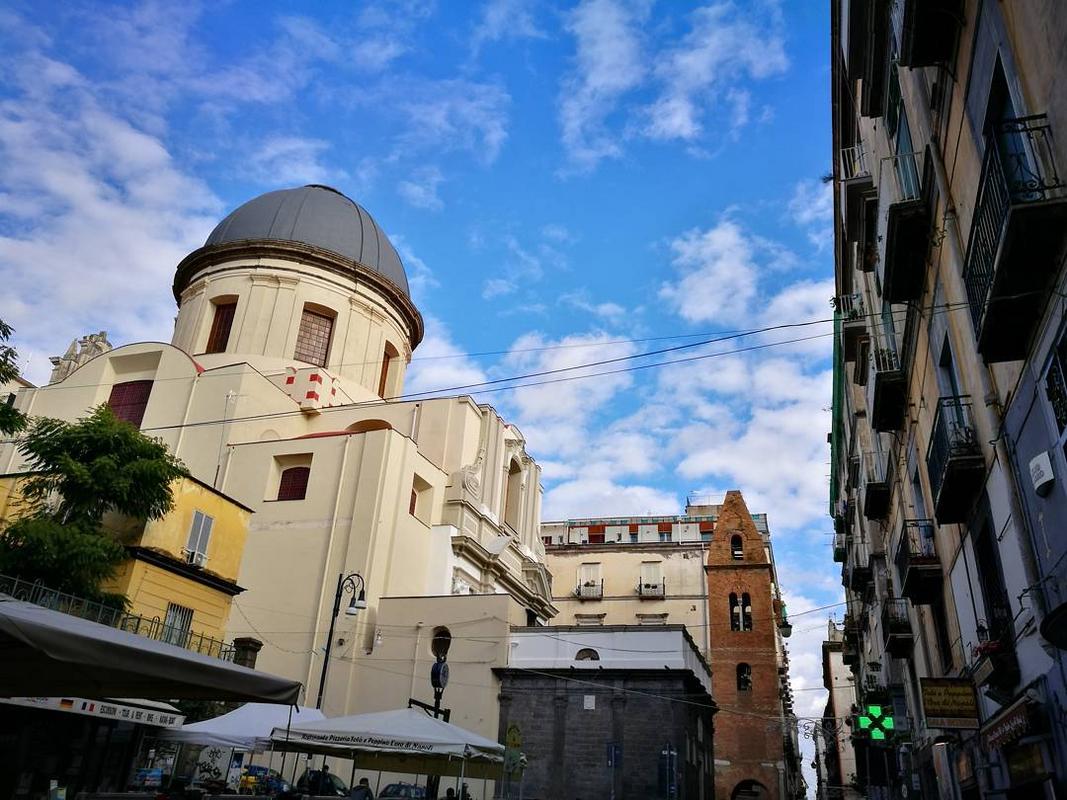The temple, just outside the perimeter walls of the city, is one of the symbolic buildings of Renaissance architecture. Its construction, which began in 1508, ended only a century later. Its architecture contrasts with that of the historic center of Todi, of a medieval character. The architectural project was attributed, albeit with some reservations, to Donato Bramante, while it was certainly the intervention of some of the most distinguished architects of the time: Cola di Matteuccio da Caprarola, Ambrogio da Milano, Antonio da Sangallo the Younger, Jacopo Barozzi called "Il Vignola" and Baldassarre Peruzzi. The temple, with a central plan and Greek cross, has three polygonal apses and a semicircular one; inside twelve plaster statues, depicting the twelve apostles, rest in as many niches, while above the main altar is the ancient image of the Madonna and Child and the wedding of Saint Catherine of Alexandria. The image, believed to be miraculous, was originally located within the walls of a small chapel that had fallen into disrepair over the centuries. A bricklayer found it covered in dust and cobwebs and, after wiping the sweat from his forehead with the same handkerchief with which he had cleaned the fresco, he was miraculously cured of a serious eye disease. As a reminder, this event remains an annual festival which is celebrated on September 8th and ends with a beautiful and suggestive fireworks display.
